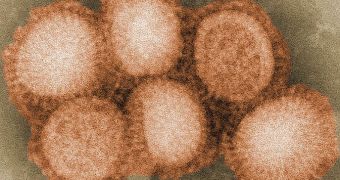A variety of drug-resistant viruses may have just found their match, researchers at the US Centers for Disease Control and Prevention (CDC) say. Working in collaboration with colleagues from the University of Buffalo, the experts managed to devise a new means of delivering a drug payload to cells that relies on using nanoparticles. The active agent, which will play an important role in boosting the function of the immune system as infections occur, will be carried by gold nanorods. These structures have proven to be extremely well suited for the job, and researchers obtained numerous successes using them in laboratory tests.
“This joint research by UB and the CDC has the potential to usher in a new generation of antiviral medicines to aggressively treat a broad range of infectious diseases, from H1N1 to avian flu and perhaps Ebola, that are becoming increasingly resistant to the medicines used against them,” explains the executive director of the UB Institute for Lasers, Photonics and Biophotonics (ILPB), Paras Prasad, PhD, the leader of the research team at the university. He is also a SUNY distinguished professor in the departments of Chemistry, Physics, Electrical Engineering and Medicine, all at UB. Details of the new work appear in the latest issue of the esteemed journal Proceedings of the National Academy of Sciences (PNAS).
The active ingredients in the new therapeutic approach are simple, single-stranded RNA molecules. These have the ability to trigger a strong immune system response to infections, by triggering the production of interferons. These are proteins that can easily prevent viral agents from replicating, provided that sufficient amounts of them be available to the body for use. However, delivering the RNA into cells is a very tricky business. The genetic material is very unstable by itself, and it is also readily attacked by the immune system before it can act. This is why the gold nanorods were brought into play, the researchers say.
“It all boils down to how we can deliver the immune activator. The UB researchers had an excellent delivery system. Dr. Prasad and his team are well-known for their contributions to nanoparticle delivery systems,” explains expert Suryaprakesh Sambhara, DVM, PhD, who is a coauthor of the PNAS paper. He based at the CDC Influenza Division. “This work demonstrates that the modulation of host response is going to be critical to the next generation of anti-viral therapies. The novelty of this approach is that most of these kinds of RNA viruses share a common host-response immune pathway; that is what we have targeted with our nanoparticle therapy. By enhancing the host immune response, we avoid the difficulty of ongoing viral resistance generated through mutations,” adds the first author of the paper, Krishnan Chakravarthy, an MD/PhD candidate at UB.

 14 DAY TRIAL //
14 DAY TRIAL //